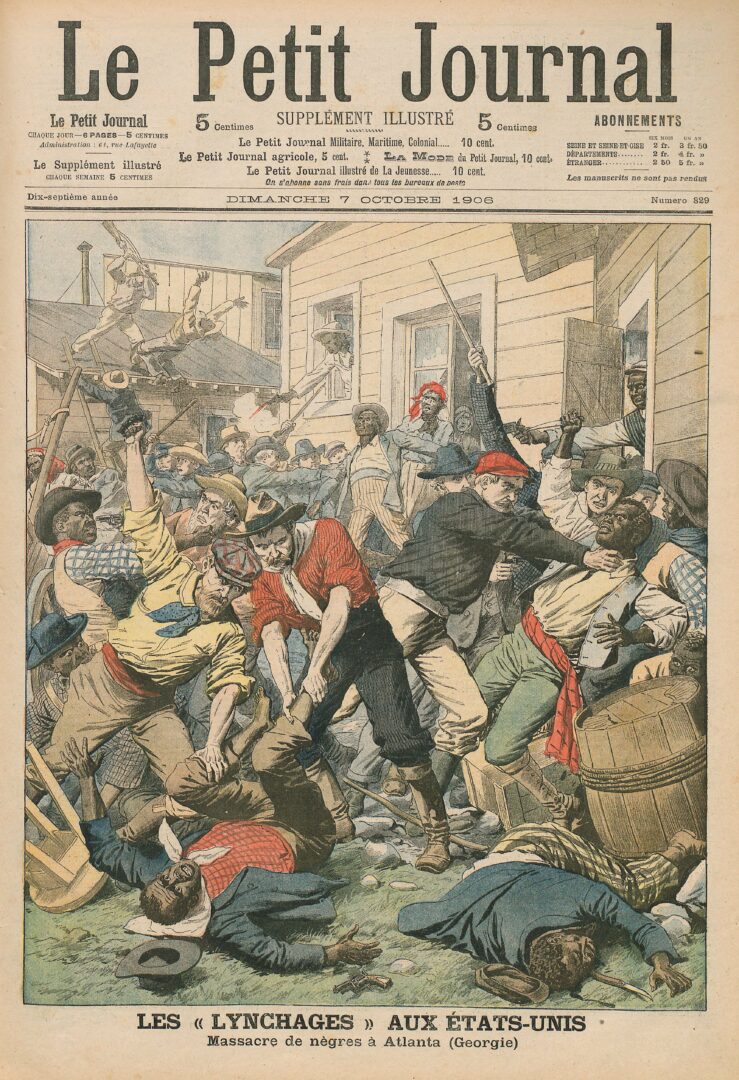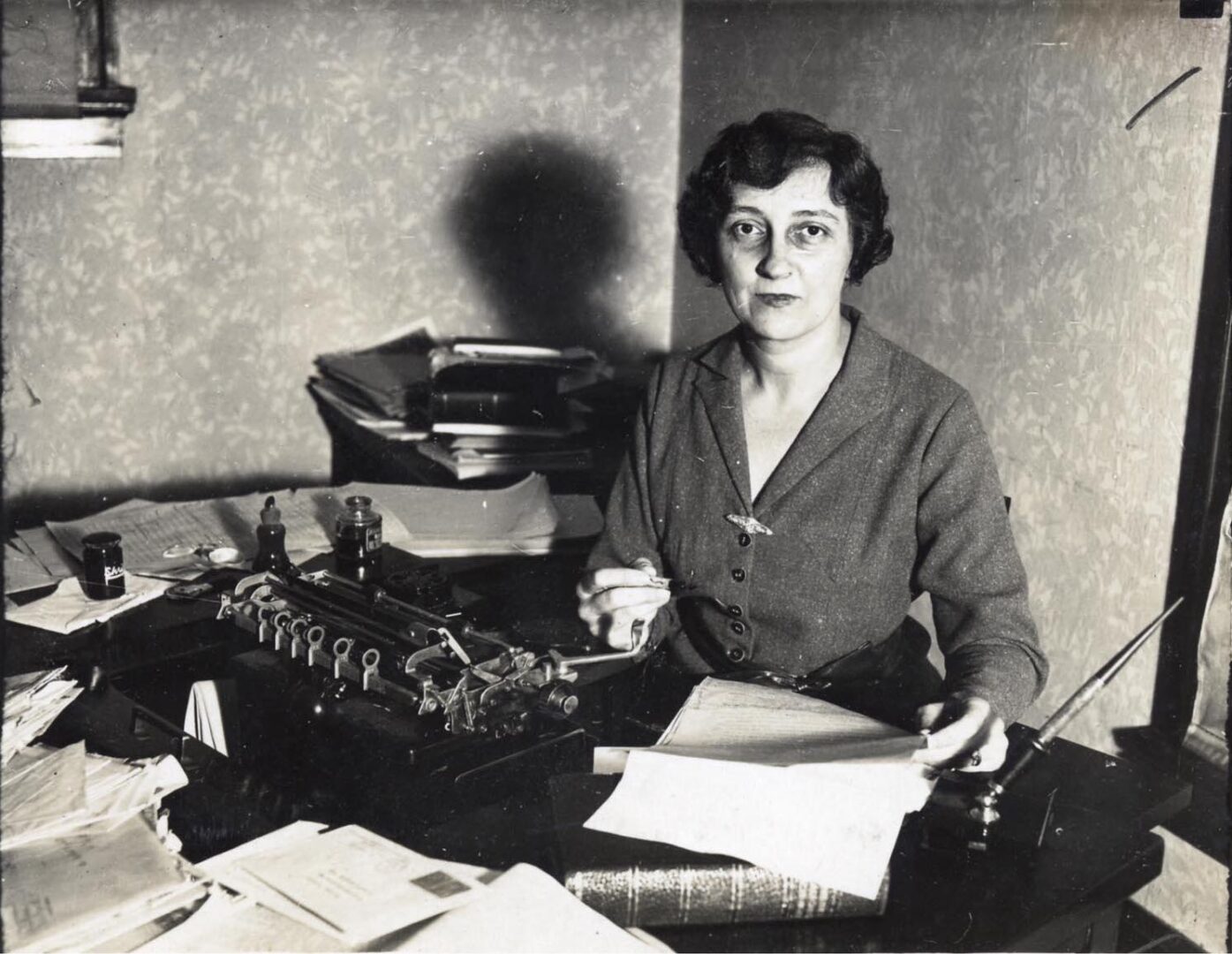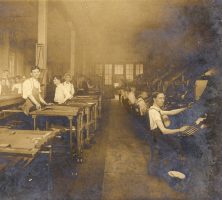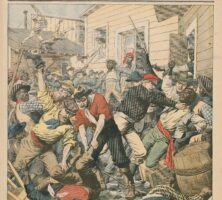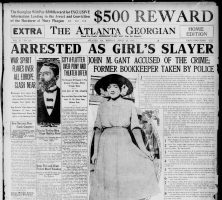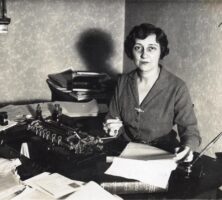The Atlanta Georgian, which circulated daily from 1906 to 1939, was the first newspaper in the South owned by William Randolph Hearst and the most prominent example of yellow journalism in Georgia.
Founding
In 1906 pharmaceutical manufacturer Fred Loring Seely established the Atlanta Georgian as a new entrant in the city’s competitive daily newspaper market. The Georgian followed the penny press model by flooding Atlanta with low-priced daily editions featuring large headlines and eye-catching illustrations. Under the leadership of editor John Temple Graves, the paper supported the politics of the Democratic Party and took vigorous stances on the day’s political issues. The Georgian vehemently opposed Georgia’s convict-lease system in its editorials and supported prohibition to the point of excluding liquor advertisements from its pages. Seely purchased the competing Atlanta News in 1907 and renamed his paper the Atlanta Georgian and News for five years before the paper reverted to its original title. After Graves departed the Georgian to take a position as editor of Hearst’s New York American in 1907, future Georgia Archives founder Lucian Lamar Knight briefly took over editorial duties for the paper. During these early years of its publication, the Atlanta Georgian became the city’s third most widely circulated daily newspaper behind the Atlanta Journal and Atlanta Constitution.
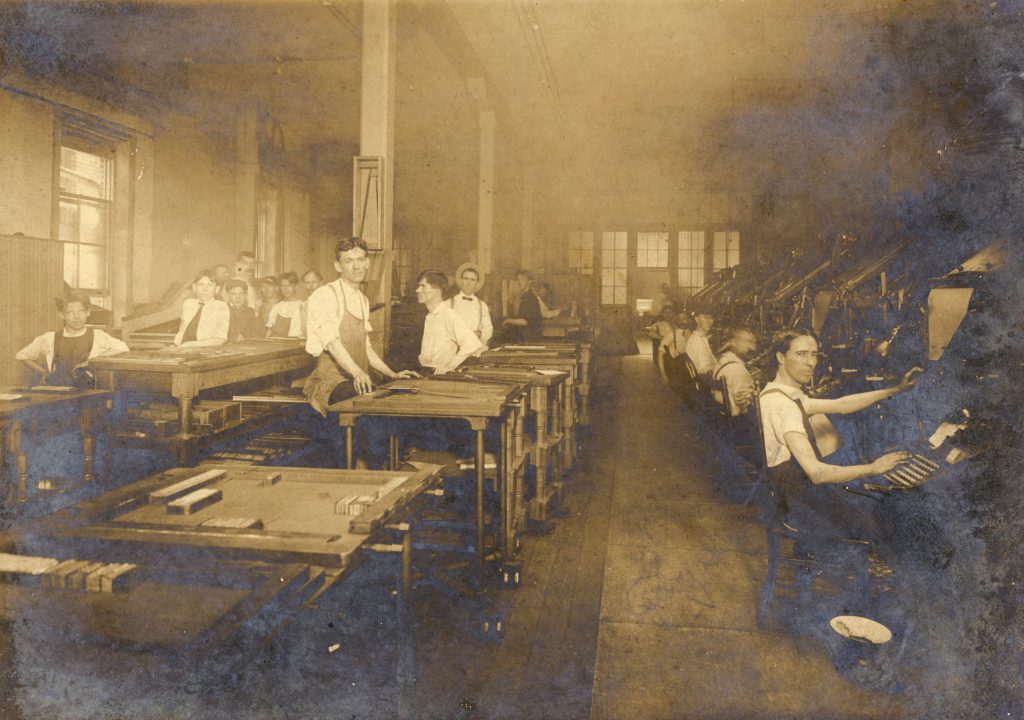
Atlanta Race Massacre of 1906
Editor John Temple Graves was a white supremacist who used the pages of the Georgian to inflame racial tensions in Atlanta during its first year in circulation. This practice reached a fever pitch in September 1906 when the paper published a series of unsubstantiated reports of Black men attacking white women. The Georgian accompanied these reports with several stories decrying the immorality of Black-owned saloons and tied the businesses to alleged violence against white women in Atlanta.
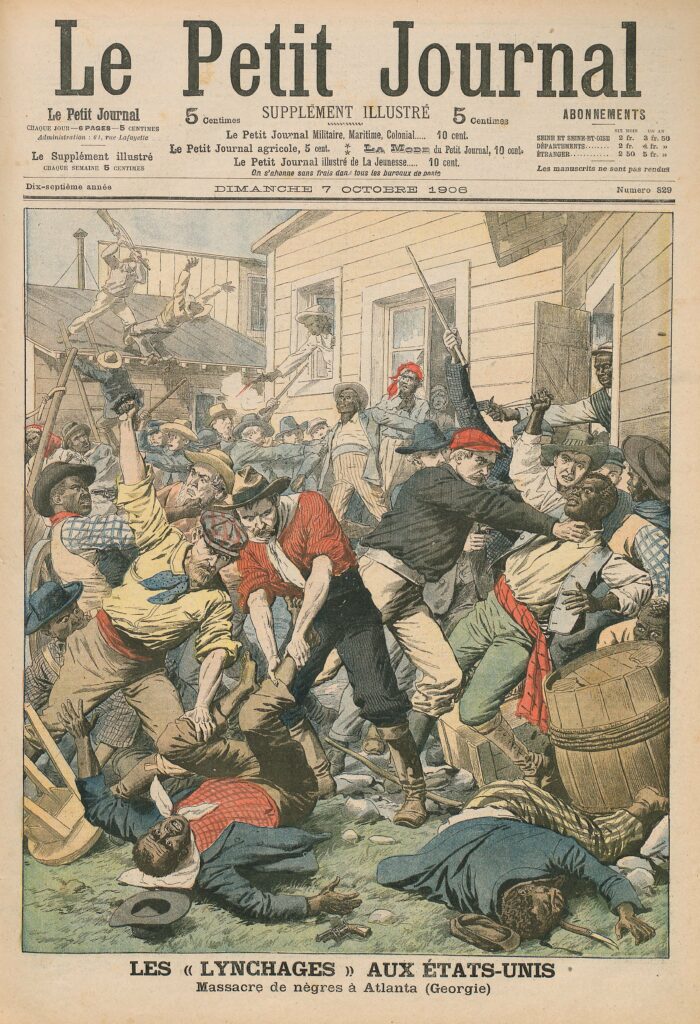
These widely circulated stories contributed to the start of the Atlanta Race Massacre of 1906 in which mobs of white men attacked hundreds of the city’s African Americans and vandalized Black-owned businesses and homes. The violence, which took place from September 22-24, 1906, resulted in the deaths of at least twenty-five African Americans, including several by lynching. After the riot, the Fulton County Grand Jury’s presentment found the Atlanta newspapers (and in particular the Atlanta News) responsible for encouraging the violence.
South’s First Hearst Paper
Famed newspaper magnate William Randolph Hearst purchased the Atlanta Georgian in 1912, expanding his media empire into the South for the first time. Under his ownership, the paper heightened its yellow journalistic practices by expanding circulation to eight or more editions a day and printing increasingly scandalous headlines and illustrations that dramatized local crimes in Atlanta. On Sundays, the Georgian circulated Hearst’s nationally syndicated Sunday American edition that featured national news. Hearst brought in staff from his other newspaper holdings across the country to populate the Atlanta newsroom. Editors Keats Speed and Foster Coates did not shy away from politics and published pieces supporting women’s suffrage and opposing child labor during the early years of Hearst ownership. By 1914 the Atlanta Georgian had surpassed the Atlanta Constitution in circulation and was, for a brief period, the second most popular newspaper in Atlanta.
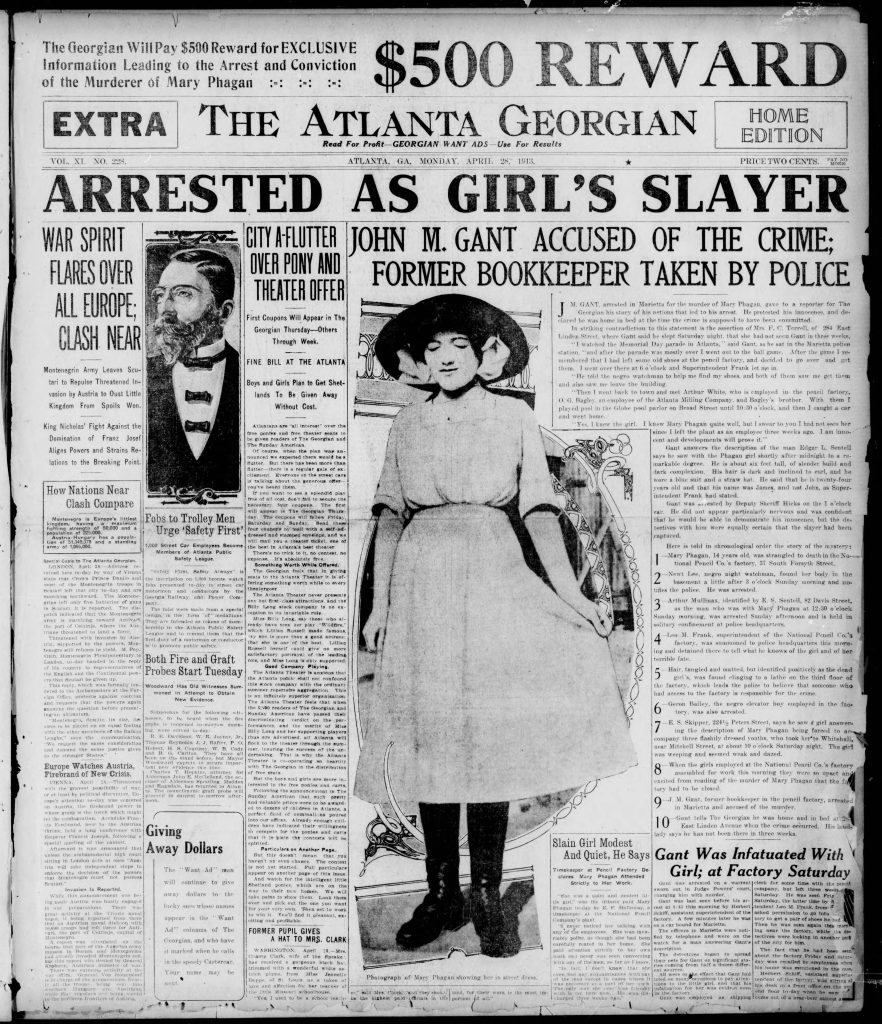
The Georgian’s temporary surge in popularity was due in part to its sensationalist coverage of the infamous Leo Frank case in Atlanta in 1913. On the Monday after the murder of pencil factory employee Mary Phagan, the Atlanta Georgian published at least eight editions of the paper with front-page reporting of the murder that included a doctored photograph of the face of the deceased child. Each edition featured three to five pages of stories about the murder including coverage of the investigation, interviews with her grieving family, and a gruesome description of the murder scene. The Georgian used the city’s fascination with the murder to sell newspapers and the Atlanta news media’s subsequent coverage of the arrest and trial of Jewish factory superintendent Leo Frank turned the case into a national story.
Although the Georgian initially cast Frank as the murderer, the paper was tied to Hearst’s business interests in the North and quickly aligned with his other papers by covering the case with a more sympathetic approach to Frank. The Georgian even praised Governor John M. Slaton for commuting Frank’s sentence in the summer of 1915. This sympathy engendered anti-Semitic resentment in Atlanta and cost the paper readers and advertisers. Despite the backlash, the Georgian covered the story relentlessly until a vigilante mob lynched Frank on August 17, 1915.
The Nevin Era
The Atlanta Georgian’s longest-serving editor, James “Jim” Nevin, helmed the Hearst paper from 1914 until his death in 1931. The Rome native started as a political reporter for the paper during the Leo Frank trial before eventually taking over as its editor. Nevin managed the paper during the height of its popularity, but by 1919, the Georgian had again fallen behind the Journal and Constitution in circulation. Although the paper never again surpassed its competitors, Nevin was a tireless advocate for the state and under his leadership, the Atlanta Georgian won the Georgia Press Association’s W.G. Sutlive Trophy for Community Service in 1926 for its efforts to promote Georgia to the rest of the country.
One of the paper’s most distinguished columnists during this period was pioneering journalist Mildred Seydell. The Atlanta native began writing for the Georgian’s society page in 1924 before landing her first major assignment covering the famed Scopes Trial in Dayton, Tennessee. In the fifteen years that followed, Seydell traveled the world covering stories for the Hearst papers and interviewed subjects as wide ranging as Bette Davis and Benito Mussolini. Her work at the Georgian broke gender barriers at a time when newspaper reporting was an exceedingly male-dominated field.
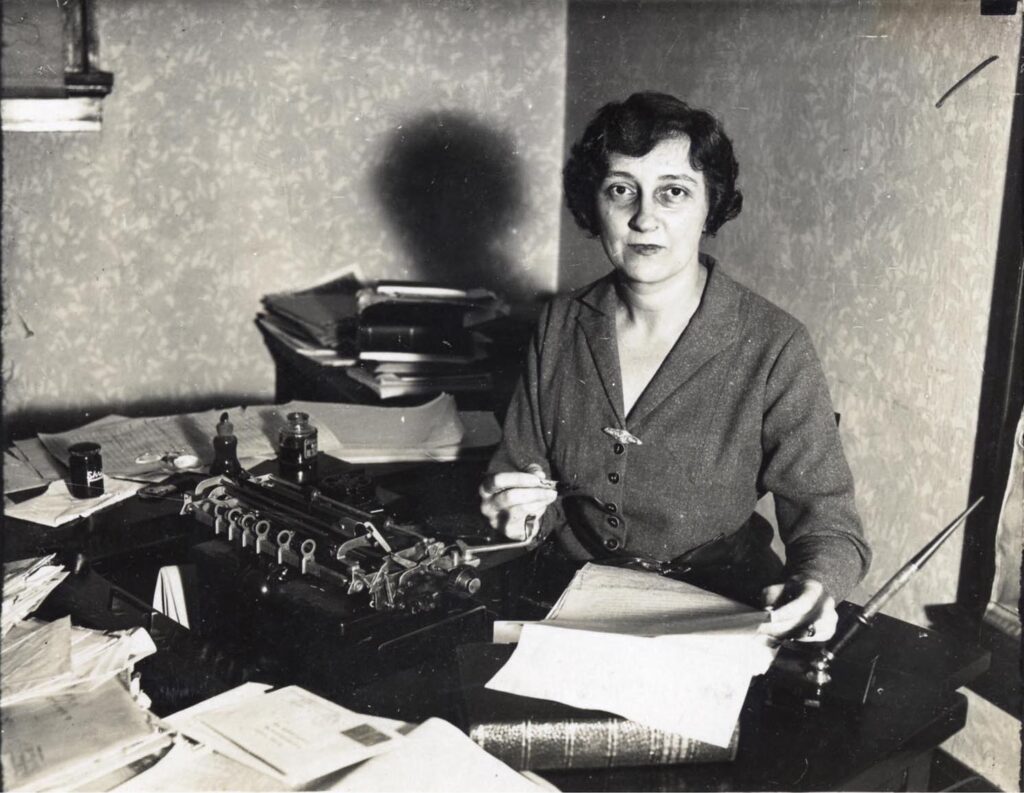
The Atlanta Georgian, like many other Hearst-owned publications, lost money during the Great Depression. Hearst had accrued substantial debt by the late 1930s and was forced to liquidate his unprofitable holdings, including the Georgian. Former Ohio governor and presidential candidate James M. Cox purchased both the Atlanta Georgian and Atlanta Journal in 1939 as part of an effort to expand his own media conglomerate. Cox immediately ceased operation of the Georgian to allow the Journal to publish its evening edition without competition. The Georgian’s closure brought a sudden end to one of the most controversial and historically significant examples of yellow journalism in the United States.






